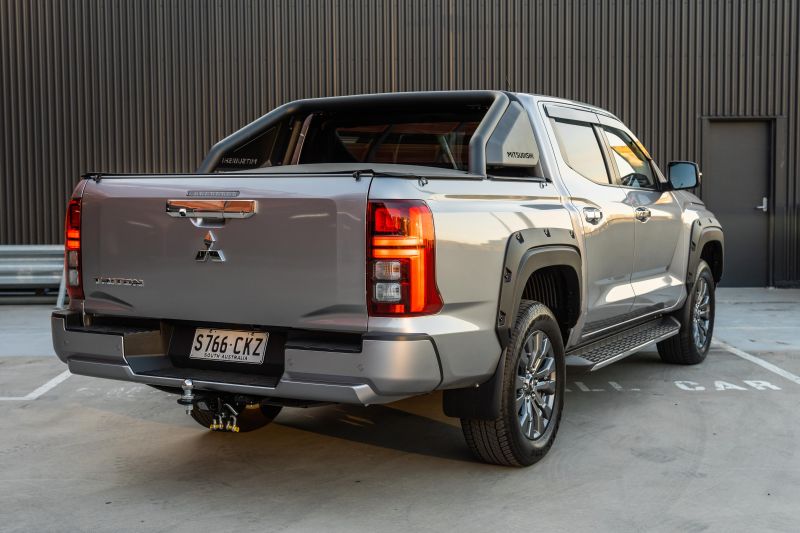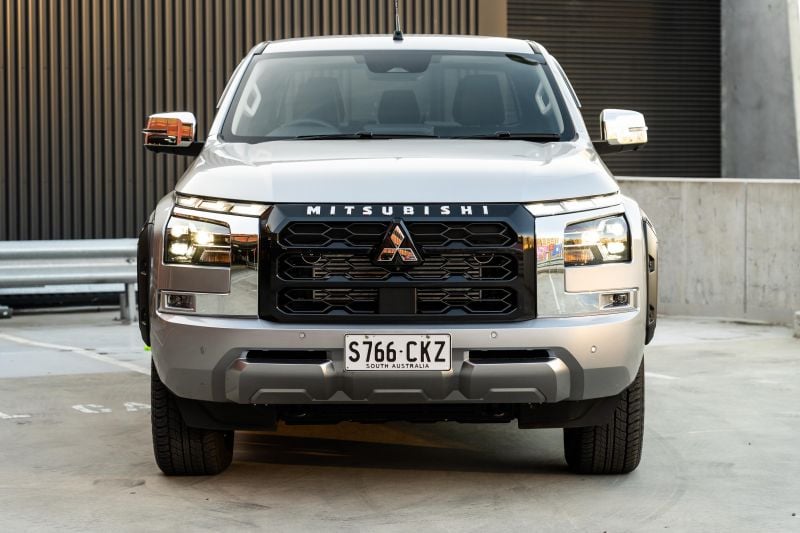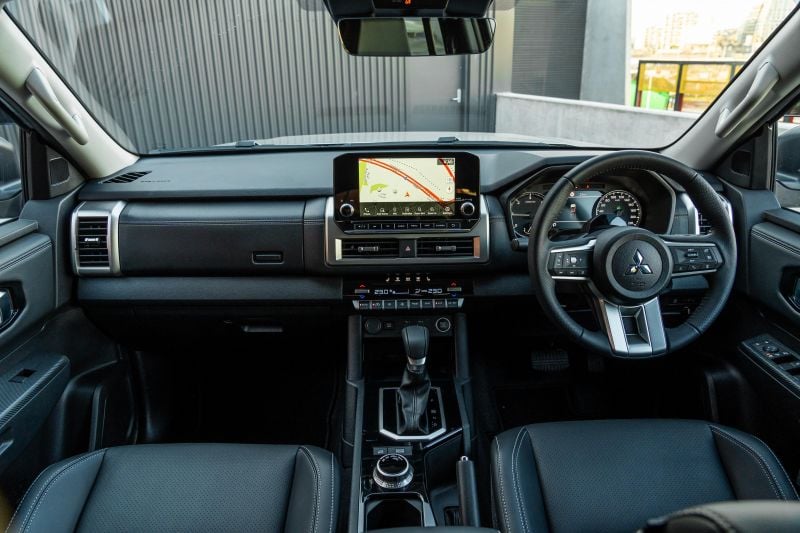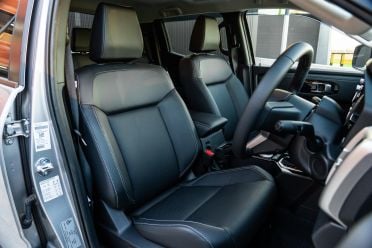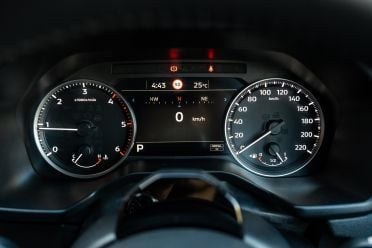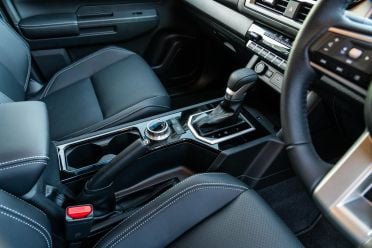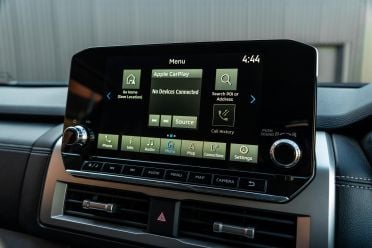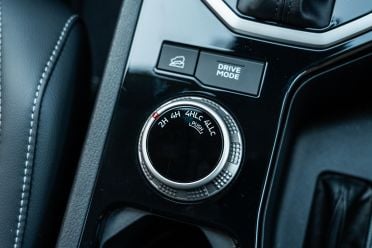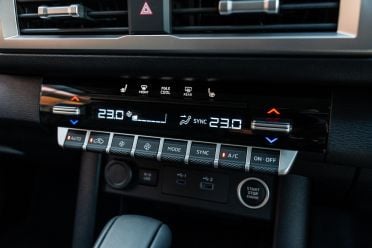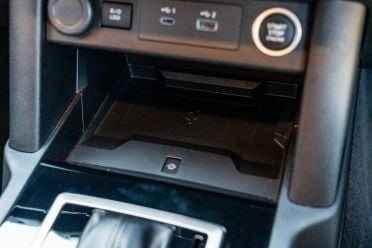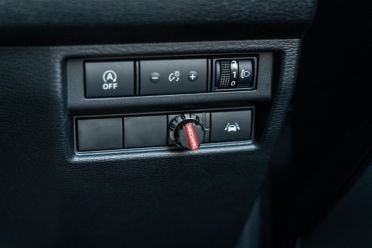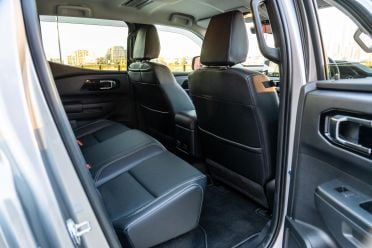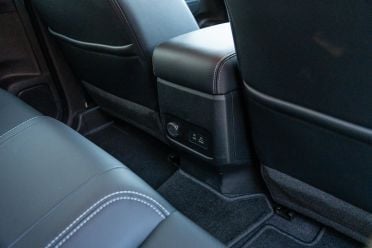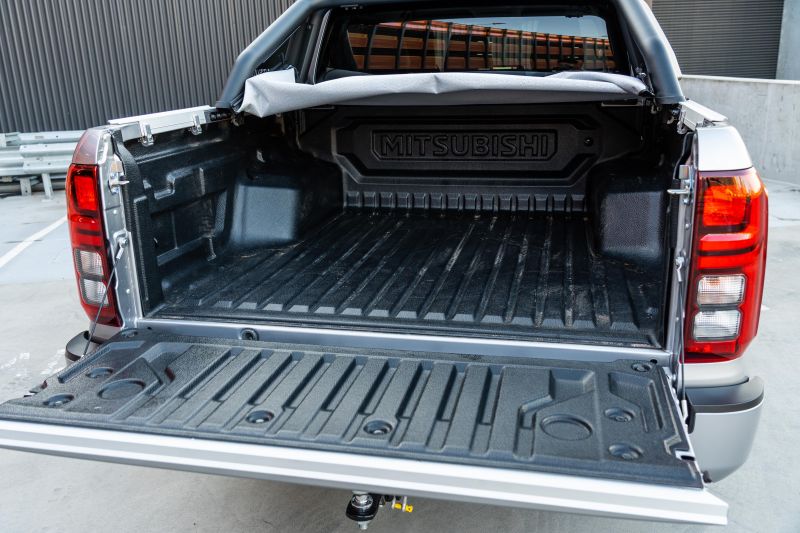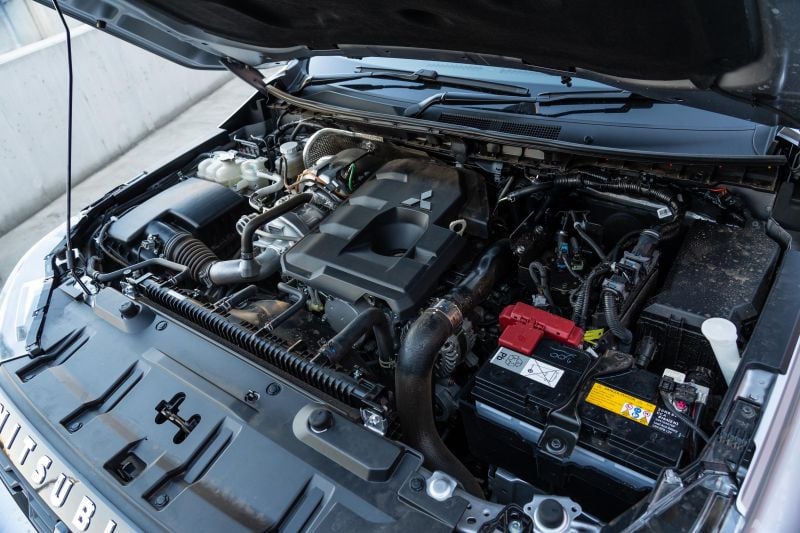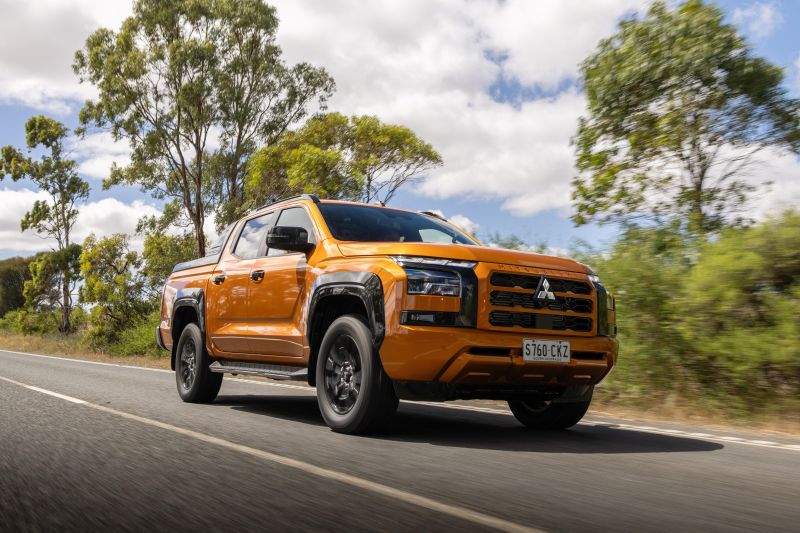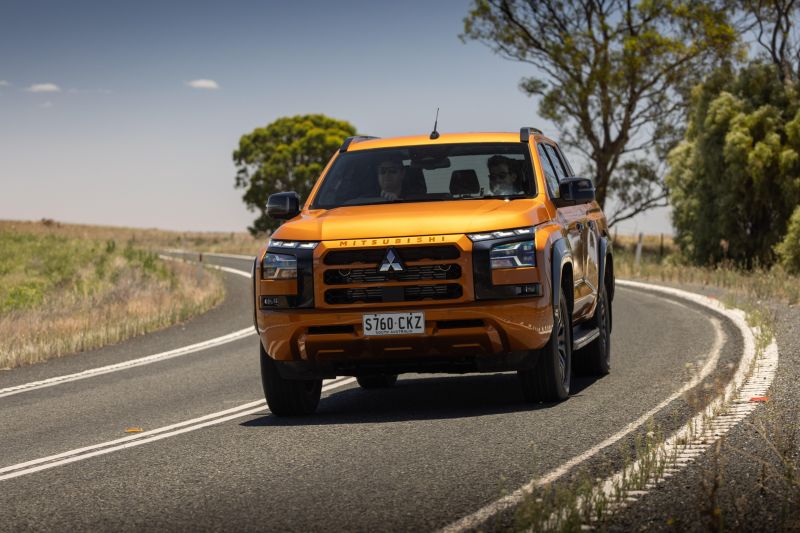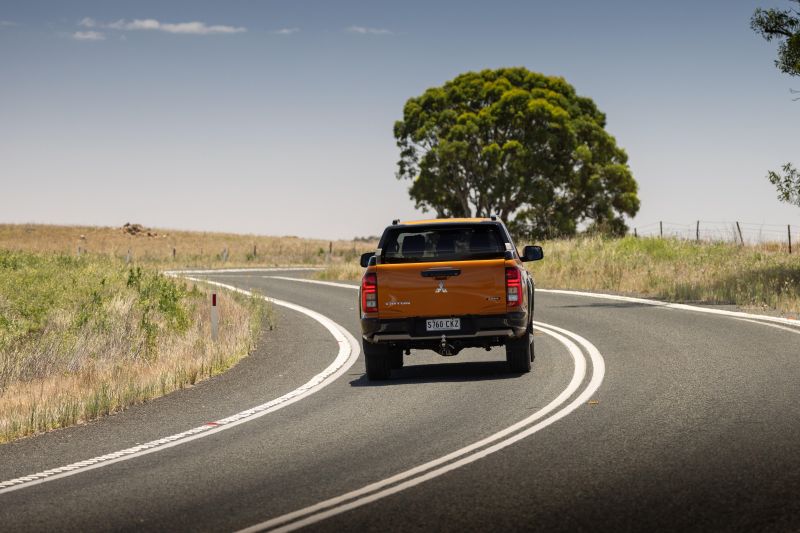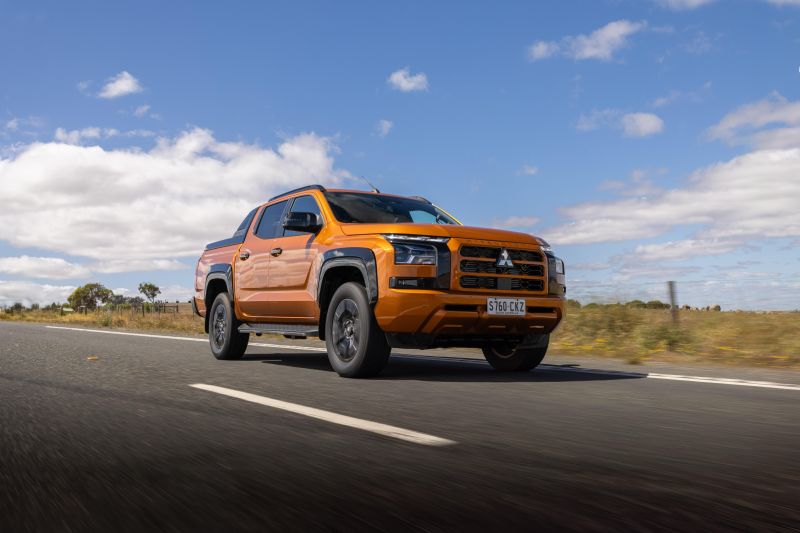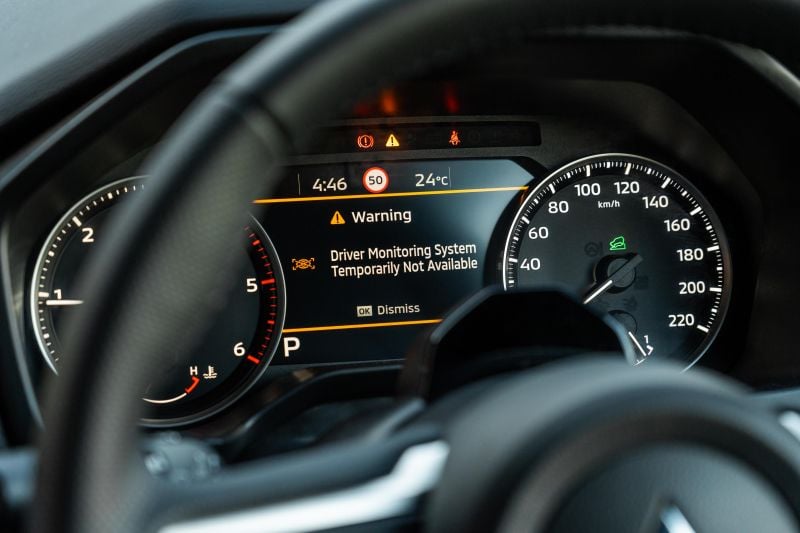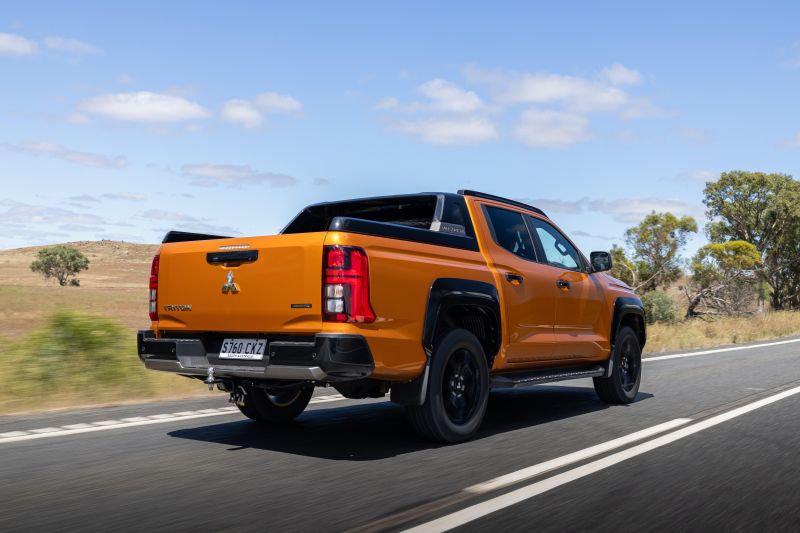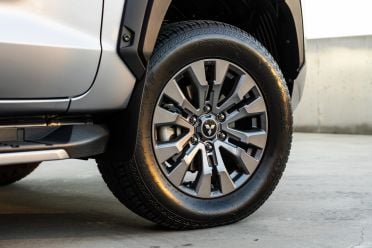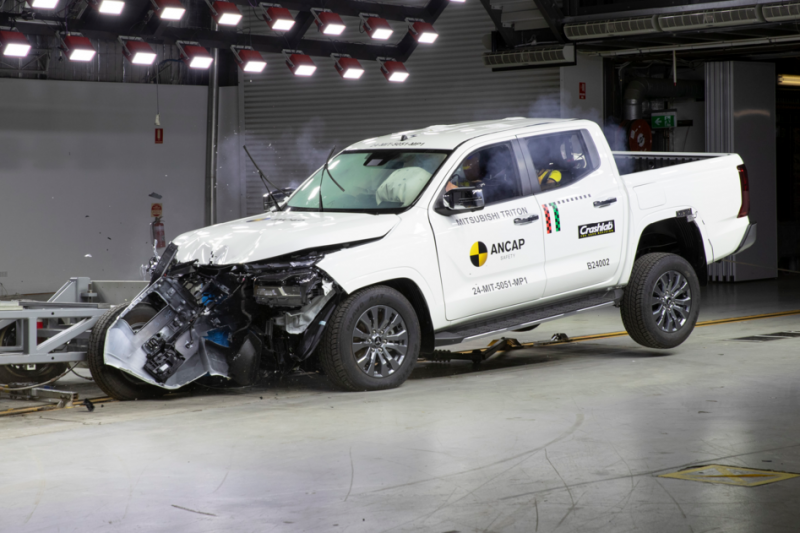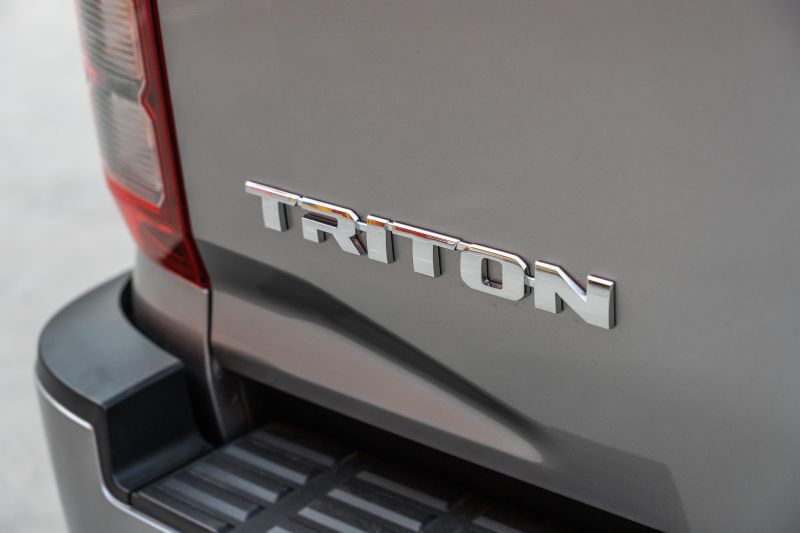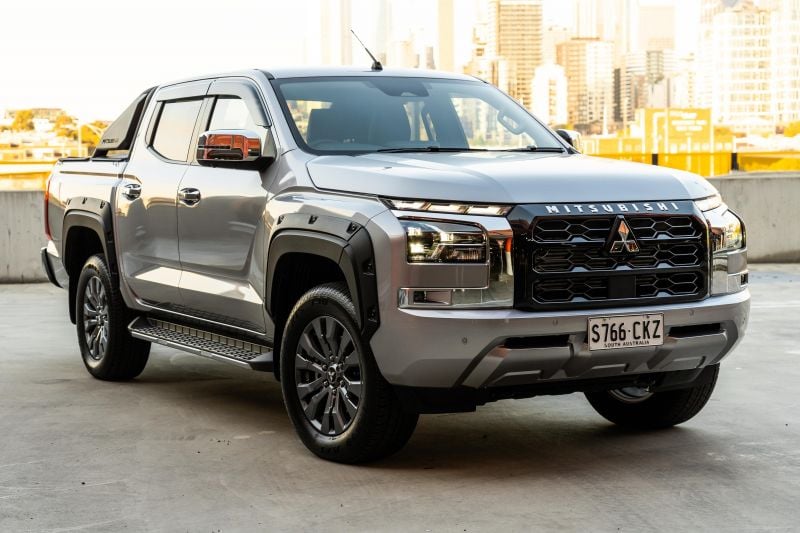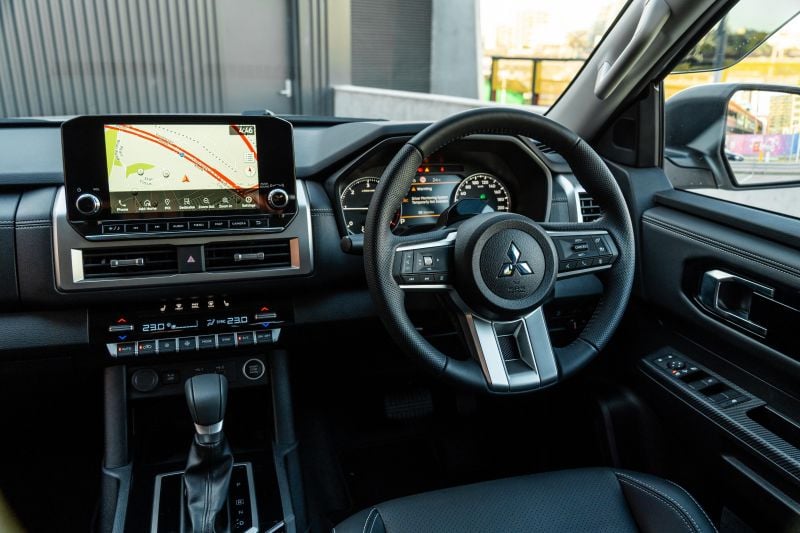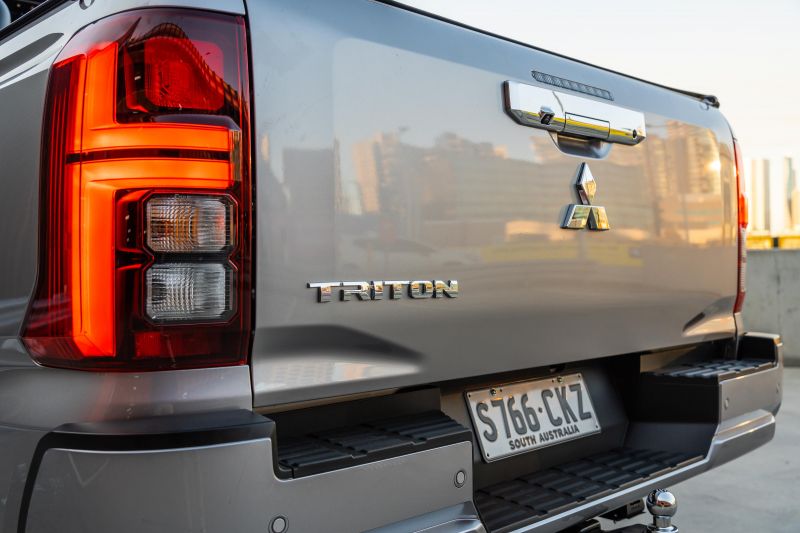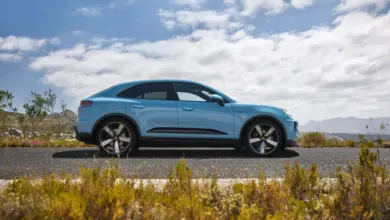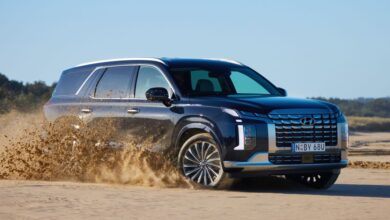2024 Mitsubishi Triton GLS review
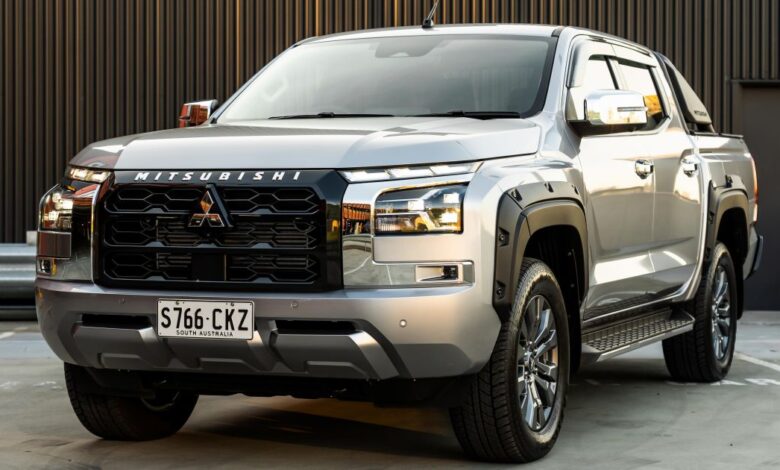
The new-generation Mitsubishi Triton is a big deal for the Japanese carmaker in Australia as it has historically been a hot contender in the top-selling ute segment.
Competition is hotter than ever however and the Triton has plenty of strong competition including the Ford Ranger, Isuzu D-Max, Mazda BT-50, Nissan Navara, Toyota HiLux and Volkswagen Amarok, among others.
While this new ute doesn’t get the option of a V6 turbo-diesel like some rivals, nor an electrified powertrain, the Triton gets a new Euro 6-certified 2.4-litre four-cylinder bi-turbo diesel engine that produces 150kW/470Nm and is closer to segment benchmarks.
With the help of this more powerful bi-turbo diesel engine the Triton now boasts a 3500kg braked towing capacity, up 400kg on the old model and now on par with the likes of the Ranger and HiLux.
The new Triton also takes a large step forward in terms of safety technology, with it filled to the gills even from the base model.
It’s the first in its segment to have front cross-traffic alert and driver monitoring, though as you’ll note further down the calibration of some of these systems leaves a lot to be desired – though Mitsubishi is releasing a fix.
With all this in mind, how does this latest entrant in the dual-cab ute market fare against its hot competition? Read along to find out.
How does the Mitsubishi Triton compare?
View a detailed breakdown of the Mitsubishi Triton against similarly sized vehicles.

Mitsubishi
Triton
How much does the Mitsubishi Triton cost?
On test here is the penultimate variant in the Triton range, the GLS 4×4 dual-cab ute. Our tester is fitted with the Deluxe Option pack, as well as a smattering of genuine accessories.
| Model | Price before on-road costs |
|---|---|
| 2024 Mitsubishi Triton GLX 4×2 dual-cab ute | $43,690 |
| 2024 Mitsubishi Triton GLX+ 4×4 club-cab ute | $50,340 |
| 2024 Mitsubishi Triton GLX 4×4 dual-cab ute | $50,940 |
| 2024 Mitsubishi Triton GLX+ 4×4 dual-cab ute | $53,290 |
| 2024 Mitsubishi Triton GLS 4×4 dual-cab ute | $59,090 |
| 2024 Mitsubishi Triton GSR 4×4 dual-cab ute | $63,840 |
The Triton GLS has received the largest price increase out of the entire range to date relative to the pre-update model – it’s up $7600.
There are more Triton variants, including cab-chassis and manual-equipped models, due in the second half of this year.
To see how the Mitsubishi Triton stacks up agains the competition, check out our comparison tool.
What is the Mitsubishi Triton like on the inside?
Walking up to the Mitsubishi Triton, it has a boxy and imposing silhouette that’s complete with a new version of the company’s ‘Dynamic Shield’ front fascia that’s stylistically similar to the current Outlander.
There are some large side steps and grab handles to help with getting into the cabin. You do need to use them to get in because it’s a bit of a climb. This is pretty common for high-riding utes.
Once you’re in there are some rather inoffensive-looking seats that are comfortable for long journeys and offer enough support. Our tester was fitted with the Deluxe Option pack that adds black leather-appointed upholstery with silver stitching. Cloth seats come as standard.
The option pack also adds electric adjustment for the driver’s seat with lumbar support. I appreciate how much the front of the seat tips up to support your thighs – long-legged people will understand.
The last feature the Deluxe Option pack adds is heated front seats which in their highest setting get very hot. They get so toasty that I could only handle the middle setting.
Ahead of the driver is a somewhat sporty-looking leather-wrapped steering wheel with perforated sections on each side. It feels nice in the hand, though I wish it had a bit more telescoping adjustment. I felt like I needed to lean forward to reach it from my desired seating position.
It’s nice to have big logical buttons on the steering wheel which would be able to used with gloves on. It took me a bit to remember which side of the steering wheel controlled what, but if you owned the ute you’d get used to it pretty quickly.
Behind the steering wheel there’s a familiar-looking instrument cluster. A slightly different variation is fitted to certain variants of the Outlander, as well as the Nissan X-Trail, Qashqai and Pathfinder.
I appreciate how clear and easy-to-read the analogue dials are, though for an almost-flagship ute that’s no longer a budget offering I almost expect a full digital instrument cluster. There is a 7.0-inch TFT supervision display however, which has a range of informative pages, though many of them have heaps of negative space.
Another bugbear with the digital instrument cluster is there are only a few informative pages which have a digital speedometer readout. It would be nice if it still featured, even if it was smaller, on other pages.
Moving across there’s an 9.0-inch touchscreen infotainment system that’s again shared with a wide range of models from the Renault-Nissan-Mitsubishi Alliance. Its size is par for the course in terms of its direct competitors but it doesn’t move the game forward like the Ranger’s large portrait-oriented touchscreen.
The Triton’s touchscreen user interface and menu layout is simple and easy to understand. It’s hard to get lost because even if you do there’s a physical ‘Menu’ button that takes you back to the home screen.
Something that surprised me is how high-resolution the screen looks, as well as how vibrant colours look. Some utes occasionally skimp in this area as a cost-cutting manoeuvre.
As standard the Triton comes with both wired and wireless Apple CarPlay, while Android Auto is only available in wired form. With my iPhone 15 Pro Max connected wirelessly I didn’t experience any dropouts whatsoever during my testing which is quite good.
There is a wireless charger at the front of the centre tunnel which is a generous size and fit my plus-size phone perfectly, though it didn’t actually charge properly and cooked my phone. This is typically a sign of the charging coils in the wireless charging pad not aligning properly with your phone.
I like how simplistic the Triton GLS’s dual-zone climate control setup is with the large physical switches to adjust the temperature, and the clearly labelled oversized buttons for other functions. You’d be able to interact with these easily with gloves on.
Stepping up to the almost flagship Triton GLS you receive a range of soft padded surfaces in the cabin over the lower variants. These include the door armrests, centre armrest and the main part of the dashboard.
Outside these areas there are still plenty of harder plastics, though this is very common for the segment. Utes typically have hard-wearing finishes because they’re meant to be workhorses.
Contrary to this is the swathes of piano black on the centre tunnel. I understand this is meant to look fancy, but it gets grubby really quickly and scratched when you wipe it clean. I much prefer how the entry-level versions have a carbon-fibre-looking plastic instead.
Disappointingly you miss out on the dashboard-mounted cupholders in the Triton GLS. You need to step up to the flagship GSR trim to get them.
On the centre tunnel there’s a nice leather-wrapped gear selector, a manual handbrake, two decently sized cupholders, and a prominent dial to control the ute’s Super Select 4WD-II system.
In terms of practicality up front there’s an sizeable amount of storage space in the centre armrest, plus dual glove boxes, sunglasses holder, and door bins large enough to fit a bottle and some paperwork with ease.
Hopping into the second row of the Triton is a fair climb, just like the front, though thankfully there are oversized grab handles to make this easier. Once you’re in there’s stadium-style seating that allows you to see over the front seats, helping to improve visibility and alleviate motion sickness.
At a leggy 182cm I had adequate legroom, good head room and okay toe room. It’s pretty on par for the dual-cab ute segment which doesn’t necessarily pride itself primarily on second-row space.
The two outboard seats are comfortable for long trips, though the middle seat is perched and narrow. Children would be fine, but squeezing three adults along the back might be a pinch.
I really like how Mitsubishi has retained the roof-mounted air vent system from the old model that sucks air from the front into the rear. It’s not quite as good as having proper air vents, but at least there’s air movement and a lot of the time that’s enough.
Other second-row amenities include a singular USB-A and USB-C port, as well as a 12V outlet. There are also the requisite ISOFIX child seat anchorages and top-tether points on the outboard seats.
Out back there’s a large tailgate that unfortunately isn’t damped to make it easier to open and close. The Isuzu D-Max, for example, recently received this as standard on all pickup models.
The tub on the Triton GLS has a liner as standard. Lower grades don’t have a tub liner as standard which is something to keep in mind if you put heavy things in there that could cause scratches.
It’s worth noting the tub on the Triton is large enough to accomodate a Euro-sized pallet. This is now pretty common for the segment.
| Dimensions | Mitsubishi Triton GLS 4×4 dual-cab |
|---|---|
| Length | 5320mm |
| Width | 1865mm |
| Height | 1795mm |
| Wheelbase | 3130mm |
| Tub length | 1555mm |
| Tub width | 1545mm 1135mm (between arches) |
| Tub height | 525mm |
To see how the Mitsubishi Triton stacks up agains the competition, check out our comparison tool.
What’s under the bonnet?
The entire Triton range is currently powered by a new bi-turbo diesel engine that’s up on both power and torque compared to the previous-generation model.
| Specifications | Mitsubishi Triton GLS 4×4 dual-cab |
|---|---|
| Engine | 2.4L 4cyl bi-turbo diesel |
| Power | 150kW (3500rpm) |
| Torque | 470Nm (1500-2750rpm) |
| Transmission | 6-speed automatic |
| Driven wheels | Full-time 4WD (Super Select 4WD II) |
| Weight | 2125kg (kerb) |
| Fuel economy (claimed) | 7.7L/100km |
| Fuel economy (observed) | 8.6L/100km |
| CO2 emissions (claimed) | 203g/km |
| Fuel tank size | 80 litres |
| AdBlue tank size | 17 litres |
| Unbraked towing capacity | 750kg |
| Braked towing capacity | 3500kg |
| Maximum towball load | 350kg |
| Gross vehicle mass | 3200kg |
| Gross combination mass | 6250kg |
| Payload | 1075kg |
The Triton’s new bi-turbo engine is one of the few utes in the segment that’s Euro 6-certified. In order to reduce CO2 emissions Mitsubishi has fitted an AdBlue system that injects an aqueous urea liquid into the exhaust chamber to capture nitrogen oxides (NOx).
I achieved the observed 8.6L/100km fuel consumption figure during a 270km mix of unladen urban and highway driving primarily in two-wheel drive. The best average figure I saw was 6.4L/100km which is very good for the segment.
To see how the Mitsubishi Triton stacks up agains the competition, check out our comparison tool.
How does the Mitsubishi Triton drive?
Starting up the Mitsubishi Triton GLS you press the starter button which is located down near the wireless charger.
It took me a while to find it first up, but I quickly learned. For those playing along at home it’s in a similar location in the Nissan X-Trail and Qashqai.
When the new 2.4-litre bi-turbo diesel engine comes to life it has a gruff idle sound. It’s not quite as loud as some rivals utes, but there are clear agricultural undertones which linger until the engine warms up a bit.
Setting off there’s decent initial acceleration. You’ll likely get the jump on most cars at the traffic lights, though it feels just as punchy as a D-Max 3.0 or Ranger Bi-Turbo, for example.
Pushing the accelerator a little harder makes the engine sound a little rattly and shouty. It’s a not a particularly nice sound, but many four-cylinder turbo-diesels produce a similar noise.
The Triton’s new four-cylinder bi-turbo diesel engine doesn’t move the segment forward like the previous-generation Amarok V6 did. Its outputs are also a far cry away from the current Ranger and Amarok’s 3.0-litre V6 turbo-diesel (184kW/600Nm).
There are no current plans to introduce a more powerful V6 engine in the Triton, though Mitsubishi hasn’t ruled it out. The Japanese carmaker also hasn’t confirmed if or when the Triton is getting any form of electrification, which is bizarre given how the brand has been a plug-in hybrid (PHEV) pioneer for over a decade.
As standard the entire Triton range is currently available with a six-speed automatic transmission. There is a manual transmission coming to certain variants later this year.
While this six-speed auto is okay, it feels a bit like a heavy-duty truck transmission that could be a little more refined at points. Like a Roadranger truck transmission, the first three gears feel like low-range and the last three gears feel like highway gears.
This change between the two theoretical sets of gears is noticeable when changing from third to fourth as there’s a big clunk. You can feel it even more when downshifting.
Another awkward point about the six-speed auto is when you’re sitting just below 50km/h the engine is revving at an obnoxious 2000rpm and refuses to change up gears. A similar thing happens again at 70km/h which is frustrating because it ruins the interior ambience.
A possible solution Mitsubishi could employ to negate a number of these issues is to add a few more gear ratios to the transmission. It already has an eight-speed automatic in the related Pajero Sport which would theoretically work here.
The Triton GLS is the most affordable variant to pick up Mitsubishi’s Super Select 4WD II system that allows for four-wheel drive on sealed surfaces. This is unlike lesser Triton variants and other utes that are equipped with a part-time four-wheel drive system as they can only have four-high (4H) activated on unsealed surfaces due to transmission and differential binding issues.
Having full-time four-wheel drive adds a sense of security when travelling on slippery surfaces, though if you want you can still leave the ute in two-wheel drive to minimise fuel use.
Controversially the Triton has picked up engine idle stop-start as part of the new-generation package. I know a lot of people dislike this fuel-saving feature, but I personally don’t mind it as I like the fact I’m not running the engine pointlessly at the traffic lights, for example.
Said idle stop-start system, however, is one of the worst I’ve experienced to date and is one of the first things I turn off when hopping in. Thankfully there’s a physical button to turn this off, unlike certain other functions that I’ll discuss later on.
One of my biggest issues with the engine idle stop-start system is it’s very laggy when switching the engine off and on. There were many points where the engine would switch off just as I wanted to start moving.
When this happened I would furiously prod the accelerator, trying to coax the engine back to life. Once it eventually did a second or two later, the car ahead of you has already accelerated ahead. It’s a similar feeling to when you stall a manual car.
On the flip side, one of my favourite attributes of the new Triton is its variable-ratio power steering rack which makes the ute feel nimble and manoeuvrable at low speeds with low weighting, and secure and direct at higher speeds with heavier weighting. The system also helps to eliminate about-centre vagueness that’s prevalent in other dual-cab utes.
Don’t be expecting the Triton to be an ‘Evolution’ model however, as it’s still a ute based on a ladder-frame chassis and it gets the rocks up when changing directions. It’s also hard to get around its 5.3-metre-long heft when parking.
As standard the Triton GLS comes with both front and rear parking sensors, as well as a surround-view camera which has surprisingly good resolution. There’s also both front and rear cross-traffic alert which is very handy to have in a vehicle that’ll likely double as a workhorse and lifestyle vehicle.
Around town the Triton’s suspension setup isn’t the best when unladen, as is typically the case with utes that have leaf-sprung rear suspension. It’s worth calling out the Triton GLS, like the top-spec GSR, has a standard-duty rear leaf suspension setup rather than the heavy-duty rear leaf suspension in lesser variants.
Mitsubishi claims to have conducted an Australian-market suspension tune, but our tester’s suspension setup was a little too bouncy and soft. It’s most noticeable over speed bumps as the ute takes a few movements to settle.
This sensation is made worse at higher speeds as while the Triton does a good job at soaking up road imperfections, larger continuous bumps really unsettle it.
Building up speed the Triton’s new bi-turbo diesel engine is lightyears better than the previous generation. It has enough to torque to maintain gears while accelerating up to highway speeds and will cruise along at ease once there.
While we didn’t get to test towing this time around, the Triton now finally has a segment-matching 3.5-tonne braked towing capacity. It would be interesting to see how well the bi-turbo engine fares at higher speeds under load as a number of four-cylinder turbo-diesels struggled to reach 100km/h as part of our ute mega test last year.
On the safety front the Triton is feature-filled, though some of the systems are infuriating. The biggest culprit by far is the driver monitoring system which is now required by ANCAP in order to receive a five-star safety rating as part of the latest protocols.
While having a system to ensure you’re paying attention to the road is great in theory, the Triton’s software calibration is terrible and could ultimately be the reason why someone chooses to buy another ute. It pings an annoying noise at almost any given opportunity when you’re not looking directly ahead.
Some examples of when the system pinged at me included when I scratched my nose, looked at the touchscreen or adjusted the climate control. It also really struggles in low-light situations, and during one particular trip it alerted me 17 times even though I was looking ahead the entire time.
Even more frustrating is the driver attention monitoring system defaults to on every time you drive the ute. There’s no simple button to press to switch it off – instead, you need to dive through multiple menus in the digital instrument cluster.
Mitsubishi has announced it’s rolling out a fix in the coming month or so, which CarExpert will test as soon as possible. Get more details about the changes here.
There’s adaptive cruise control as standard which is good because it makes tedious freeway driving less tiring. Overall the system works well, though it loves to leave a generous gap between the vehicle ahead which other cars cut into easily.
Other safety equipment include lane departure warning which makes subtle vibrations in the steering wheel when you get close to a lane marking while driving, as well as a lane-keep assist system that uses the brakes to pull you back into the lane when you start to drift over the lines.
The latter of these needs to be turned on every time you turn the Triton on.
Lastly, the Triton GLS comes with LED headlights which are bright and have an automatic high-beam function. LED headlights are good if you frequently travel in rural/regional areas and need to be on the lookout for animals on the road.
What do you get?
On test here is the penultimate variant in the Triton range – the GLS 4×4 dual-cab.
Triton GLX highlights:
- 17-inch wheels
- Automatic high-beam
- Heavy Duty rear suspension
- Keyless entry
- 9.0-inch touchscreen infotainment system
- Wireless Apple CarPlay
- Wired Android Auto
- Satellite navigation
- 4-speaker sound system
- 7.0-inch TFT supervision display
- Black fabric upholstery
- Manually adjustable driver’s seat with power lumbar
- Vinyl flooring
- Air-conditioning
- Floor console box with lid
- 2 x cupholders
- 2 x bottle holders
- Sunglasses holder
- Second-row bench with centre armrest
- Seatback pocket
- 1 x front USB-A outlet
- 1 x rear USB-A outlet
- 1 x front USB-C outlet
- 1 x rear USB-C outlet
Triton GLX+ adds:
- Locking rear differential
- Side steps
- Front fog lights
- 17-inch alloy wheels
- Rear privacy glass
- Reversing AEB
- Surround-view cameras
- DAB digital radio
- Black fabric upholstery, silver stitching
Triton GLS adds:
- Standard Duty rear suspension
- Super Select 4WD II
- 18-inch alloy wheels
- Tub liner
- Heated, power-adjustable exterior mirrors
- LED headlights
- LED front fog lights
- LED indicator, tail lights
- Interior ‘soft padding surfaces’, silver accent stitching
- Dual-zone climate control
- Terrain Control
- Hill descent control
- Electrochromic interior rear-view mirror
- Keyless start
- Wireless phone charger
GLS Deluxe Option pack ($1500) adds:
- Leather upholstery
- Heated front seats
- Power driver seat
Is the Mitsubishi Triton safe?
The Mitsubishi Triton has a five-star ANCAP safety rating based on testing carried out in 2024.
| Category | Mitsubishi Triton |
|---|---|
| Adult occupant protection | 86 per cent |
| Child occupant protection | 89 per cent |
| Vulnerable road user protection | 74 per cent |
| Safety assist | 70 per cent |
Standard safety equipment includes:
- 8 airbags incl. front-side
- Autonomous emergency braking (AEB)
- Pedestrian detection
- Cyclist detection
- Junction assist
- Adaptive cruise control
- Blind-spot monitoring
- Driver attention monitoring
- Emergency lane keeping
- Front, rear cross-traffic alert
- Intelligent speed limiter
- Lane keep assist
- Multi-collision brake
- Parking sensors front, rear
- Trailer stability assist
- Reversing camera
- Tyre pressure monitoring
GLX+ and up get a surround-view camera and rear AEB.
How much does the Mitsubishi Triton cost to run?
The Mitsubishi range is backed by Australia’s longest new car warranty, provided you service within the dealer network.
| Running costs | Mitsubishi Triton |
|---|---|
| Warranty | 5 years or 100,000km (standard) 10 years or 200,000km (service activated) |
| Service interval | 12 months or 15,000 kilometres |
| Capped price servicing | 10 years |
| Average capped-price service cost | $669 |
| Total capped-price service cost | $6690 (10 years) |
CarExpert’s Take on the Mitsubishi Triton
The new Mitsubishi Triton is a huge step ahead in terms of safety and technology compared to its predecessor, though among its top-selling rivals it doesn’t move the segment forward a great deal.
I’m a fan of the new four-cylinder bi-turbo diesel powertrain and the fact it allows for a segment-matching 3.5-tonne braked towing capacity, though it’s held back by a frustratingly laggy engine idle stop-start system and an archaic six-speed automatic transmission.
The calibration of some of the safety systems also leaves a lot to be desired. It’s infuriating how the driver monitoring system bings and bongs so incessantly, especially because it’s meant to actually help you instead of making you want to turn it off at any given opportunity.
For a lot of prospective buyers these little tidbits would likely turn them off on a test drive, though it’s worth keeping in mind Mitsubishi has one of the longest new-car warranty’s as long as you commit to servicing at the dealer.
While the outgoing model ended up more of a budget-oriented option up against the likes of Chinese rivals including the GWM Ute Cannon and LDV T60, this new model repositions itself as a rival to segment stalwarts like the Ford Ranger, Isuzu D-Max and Toyota HiLux.
In penultimate GLS guise as tested here, this feels like the pick of the Triton range as it pretty much all the features you could ever want from a dual-cab ute.
It will be interesting to see how this changes when manual and cab-chassis variants arrive later this year, because historically the Triton has been a better seller down lower in the range.
Click the images for the full gallery
MORE: Buy a Mitsubishi Triton
MORE: Everything Mitsubishi Triton
